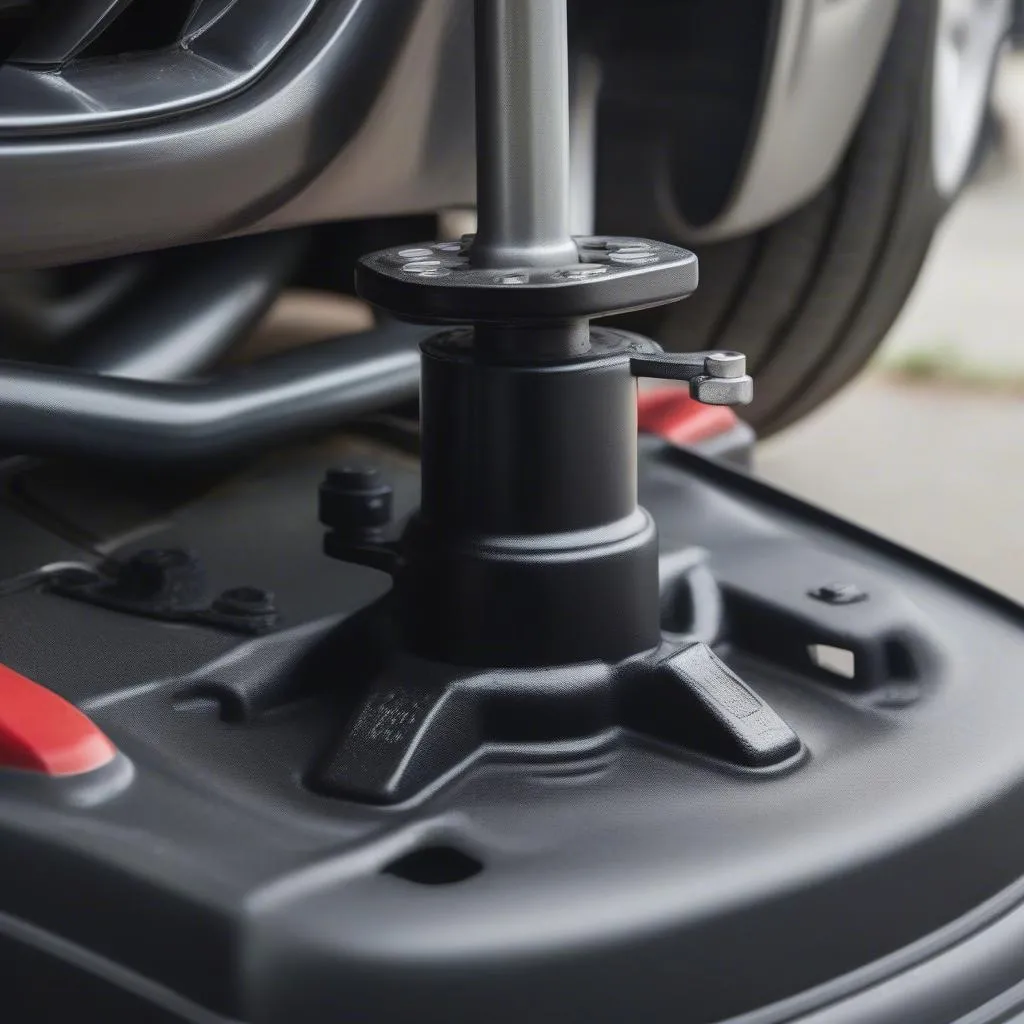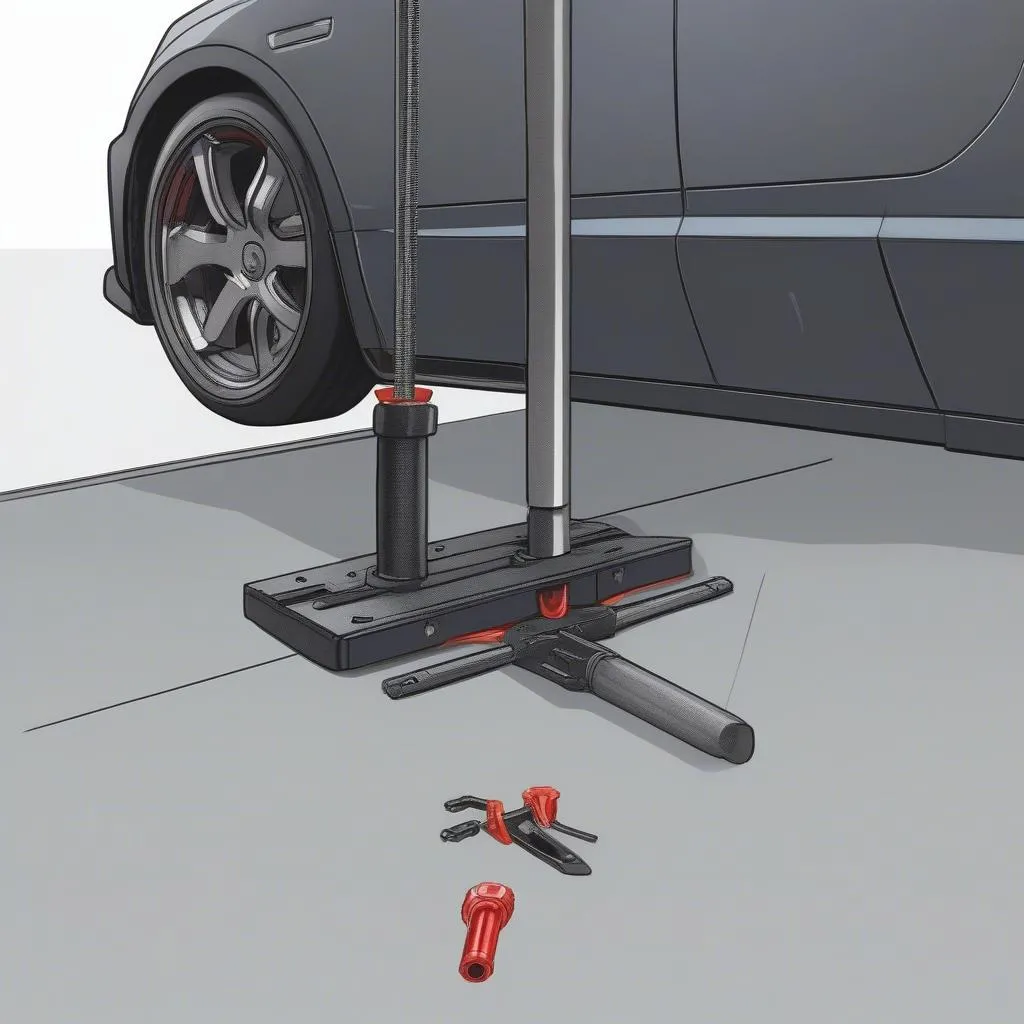Have you ever been stranded on the side of the road with a flat tire, only to find that your car jack is missing a crucial part? Or maybe you’re just curious about the intricate mechanisms that allow you to lift your heavy car with such ease. Whatever your reason, understanding the components of a car jack is essential for anyone who wants to be prepared for unexpected roadside emergencies.
Why is it Important to Understand Car Jack Parts?
Understanding the parts of a car jack goes beyond just knowing how to change a tire. It’s about comprehending the mechanics behind the lifting system, recognizing potential problems, and ensuring your safety during roadside repairs. A malfunctioning car jack can lead to dangerous situations, such as the jack collapsing under the weight of the vehicle or parts becoming loose and causing damage.
Car Jack Parts Explained: A Visual Guide
Let’s dive into the key components of a typical car jack and their functions:
1. Base
The base of the car jack provides a stable foundation for the lifting mechanism. It is usually made of sturdy metal and designed to withstand the weight of the vehicle.
 Car Jack Base
Car Jack Base
2. Lifting Handle
The lifting handle is the main mechanism for raising the car. It is connected to the lifting screw and allows you to apply force to lift the vehicle.
 Car Jack Lifting Handle
Car Jack Lifting Handle
3. Lifting Screw
The lifting screw is the heart of the car jack. It is a threaded rod that moves vertically as you turn the lifting handle, raising the car.
4. Jack Saddle
The jack saddle is the part that directly contacts the vehicle’s lifting point. It is designed to distribute the weight evenly and prevent damage to the car’s frame.
5. Safety Release Mechanism
The safety release mechanism is a critical component that allows you to lower the car safely. It prevents the jack from collapsing suddenly.
Common Issues with Car Jacks
As with any mechanical device, car jacks can experience problems over time. Here are some common issues to be aware of:
1. Worn-Out Lifting Screw
The lifting screw can wear down due to frequent use. This can make it difficult to lift the car or cause it to collapse under load.
2. Damaged Base or Saddle
The base or jack saddle can become damaged if the jack is dropped or mishandled. This can compromise the stability of the jack and make it unsafe to use.
3. Faulty Safety Release Mechanism
A faulty safety release mechanism can prevent you from lowering the car safely. This can lead to the jack locking in place and requiring specialized tools to release it.
What to do if Your Car Jack Malfunctions
If you encounter problems with your car jack, it’s crucial to address them immediately. Attempting to use a malfunctioning jack can lead to serious damage and injury. Here’s what you can do:
1. Inspect the Jack Thoroughly
Carefully examine the jack for signs of wear, damage, or loose parts. Pay close attention to the lifting screw, base, and safety release mechanism.
2. Seek Professional Assistance
If you notice any problems, don’t attempt to repair the jack yourself. Contact a qualified mechanic or auto repair shop for professional assistance.
Where to Buy Car Jack Parts
You can find replacement parts for car jacks at most auto parts stores or online retailers. Be sure to specify the make and model of your car jack when ordering parts to ensure compatibility.
Frequently Asked Questions about Car Jacks
Q: What are the different types of car jacks?
A: There are several types of car jacks available, including:
- Scissor jacks: These are the most common type of car jack found in most vehicles. They are simple to operate and relatively inexpensive.
- Hydraulic jacks: These jacks use hydraulic pressure to lift heavy loads. They are typically more powerful and stable than scissor jacks.
- Bottle jacks: Bottle jacks are compact and portable, making them ideal for use in tight spaces.
Q: How do I know which lifting point to use on my car?
A: Consult your vehicle’s owner’s manual for information on the designated lifting points. The lifting points are typically marked with small squares or triangles.
Q: How often should I check my car jack?
A: It’s a good idea to inspect your car jack at least once a year, or more frequently if you use it often. Look for any signs of wear, damage, or rust.
Q: How much weight can a car jack handle?
A: The weight capacity of a car jack varies depending on the model. Check the manufacturer’s specifications to determine the maximum weight it can lift.
Need Expert Help with Your Car Jack?
If you have questions or need help with your car jack, feel free to reach out to our team of automotive experts at Tech Car USA. We provide comprehensive diagnostics and repair services for all types of vehicles.
Keep Your Car Jack in Top Condition
A well-maintained car jack is an essential part of any driver’s toolkit. By understanding its parts, recognizing potential problems, and following proper maintenance procedures, you can ensure that your car jack is ready for any roadside emergency. Don’t forget to explore other helpful articles on our website for more automotive tips and information. And as always, feel free to contact us at Whatsapp: +84767531508 for any questions or assistance.